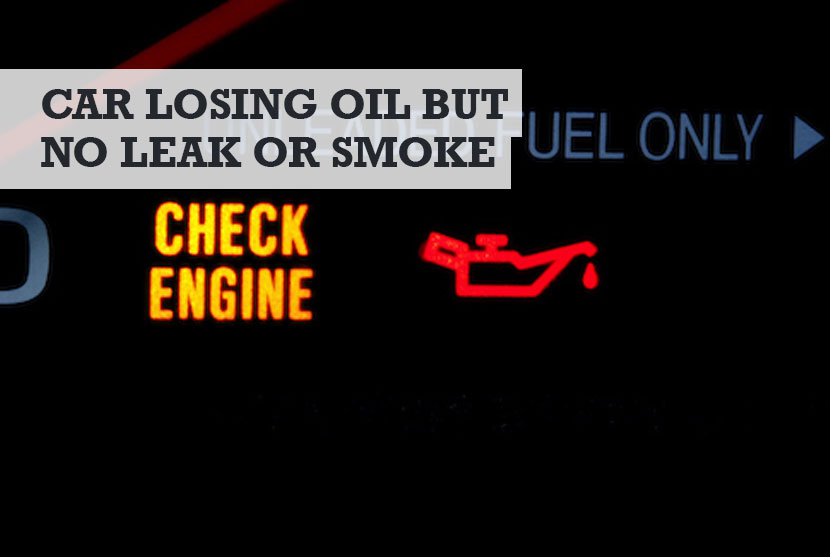Ever wondered why your car is losing oil but there’s no visible leak or smoke? It’s a mystery that leaves many drivers scratching their heads. This issue can be frustrating, especially when you’re doing everything right—regular maintenance, timely oil changes, and keeping an eye on the dashboard. Yet, somehow, the oil level keeps dropping. But don’t panic just yet! In this article, we’ll uncover the hidden culprits behind this sneaky problem and provide practical solutions to keep your car running smoothly.
Let’s face it—oil is the lifeblood of your engine. Without it, your car would grind to a halt faster than you can say “check engine light.” So, if your car is mysteriously losing oil without any obvious signs of leaks or smoke, it’s time to dig deeper. This isn’t just about saving money on oil refills; it’s about protecting your engine from serious damage down the road.
Our goal here is to equip you with the knowledge to identify the problem, understand its root causes, and take proactive steps to fix it. Whether you’re a seasoned mechanic or a weekend warrior, this guide will help you navigate the tricky world of oil loss and keep your car in top shape. Let’s roll up our sleeves and dive in!
Read also:Jelly Beans Leak The Sweet Scoop You Need To Know
Understanding the Basics: What Causes Oil Loss?
Before we dive into the nitty-gritty, let’s take a moment to understand how oil works in your car. Oil lubricates the engine components, reduces friction, and helps dissipate heat. When something goes wrong with the oil system, it can lead to all sorts of problems. But what exactly causes oil loss when there’s no leak or smoke? Let’s break it down.
Common Culprits Behind Oil Loss
Here are some of the most common reasons why your car might be losing oil:
- Worn-out piston rings: These tiny rings play a big role in sealing the combustion chamber. Over time, they can wear out, allowing oil to seep into the combustion chamber and burn off.
- Valve stem seals: These seals prevent oil from leaking into the intake manifold. If they become brittle or damaged, oil can escape and burn in the combustion process.
- PCV valve issues: The Positive Crankcase Ventilation (PCV) valve helps regulate airflow in the engine. A clogged or malfunctioning PCV valve can cause oil to accumulate in places it shouldn’t.
- Oil evaporation: Yes, oil can evaporate, especially in hot climates or during long drives. While this is a natural process, excessive evaporation could indicate other underlying issues.
Diagnosing the Problem: Where to Look
Now that we’ve identified some potential causes, it’s time to put on your detective hat and start investigating. Here’s how you can pinpoint the source of the oil loss:
Step 1: Check the Oil Level Regularly
One of the easiest ways to monitor oil loss is by checking the oil level regularly. Use the dipstick under the hood to see if the oil is within the recommended range. If you notice a significant drop between oil changes, it’s a red flag that something’s not right.
Step 2: Inspect for Hidden Leaks
Not all leaks are obvious. Sometimes, oil can drip onto hot engine components and evaporate before you even notice it. Look for signs of oil residue around the engine bay, especially near gaskets and seals.
Advanced Diagnosis: Tools and Techniques
If you’re still scratching your head, it might be time to bring out the big guns. Here are some advanced diagnostic tools and techniques to help you solve the mystery:
Read also:Amirah Dyme Leak The Truth Behind The Controversy And What You Need To Know
1. Compression Test
A compression test can reveal if your piston rings are worn out. Low compression in one or more cylinders could indicate oil burning in the combustion chamber.
2. Leak-Down Test
This test measures the percentage of air escaping from the cylinder. A high leak-down percentage could point to worn-out valve stem seals or piston rings.
3. Blue Smoke on Startup
If you notice blue smoke coming from the exhaust when you first start the car, it could mean oil is entering the combustion chamber. This is often caused by worn-out valve stem seals.
Preventive Maintenance: How to Avoid Oil Loss
Prevention is always better than cure. Here are some tips to help you avoid oil loss in the first place:
- Change your oil regularly: Fresh oil performs better and reduces the risk of oil-related issues.
- Check for worn-out components: Regular inspections can catch problems before they escalate.
- Use the right oil: Make sure you’re using the correct viscosity and type of oil recommended by your car manufacturer.
Cost of Repair: What to Expect
Fixing oil loss can range from a simple and affordable repair to a costly overhaul, depending on the root cause. Here’s a rough estimate of what you might expect:
1. Worn-Out Piston Rings
Replacing piston rings is a major job that usually involves engine disassembly. Expect to pay anywhere from $1,500 to $3,000 for parts and labor.
2. Valve Stem Seals
Replacing valve stem seals is less expensive but still requires some engine work. Costs typically range from $500 to $1,200.
3. PCV Valve
This is one of the cheapest fixes on the list. Replacing a PCV valve usually costs between $50 and $200.
Common Misconceptions About Oil Loss
There are plenty of myths floating around about oil loss. Let’s debunk a few of them:
1. “Oil Loss is Normal”
While some oil consumption is normal, significant oil loss is not. If you’re adding oil more frequently than recommended, it’s time to investigate further.
2. “Blue Smoke Always Means a Leak”
Not necessarily. Blue smoke can also indicate oil burning in the combustion chamber, which might not be visible as a leak.
Real-Life Examples: Stories from the Road
Let’s hear from some real drivers who’ve dealt with this issue:
Case Study 1: John’s 2010 Toyota Camry
John noticed his Camry was losing oil despite no visible leaks. After a compression test, he discovered worn-out piston rings. The repair cost him around $2,500, but it saved him from a potential engine meltdown.
Case Study 2: Sarah’s 2015 Honda Civic
Sarah’s Civic was burning oil, and she noticed blue smoke on startup. A leak-down test revealed worn-out valve stem seals. She opted for a replacement, which cost her about $800.
Expert Advice: Tips from the Pros
We reached out to a few automotive experts to get their take on this issue:
Tip 1: Don’t Ignore Warning Signs
“If you notice your car is losing oil, don’t wait for the engine to fail. Address the issue promptly to avoid costly repairs,” says Mike Thompson, a certified mechanic with over 20 years of experience.
Tip 2: Keep Records
“Maintain a log of oil changes and any repairs related to oil loss. This can help you spot patterns and make informed decisions,” advises Sarah Lee, an automotive consultant.
Conclusion: Take Control of Your Car’s Health
So there you have it—a comprehensive guide to understanding and addressing the issue of car losing oil but no leak or smoke. By staying vigilant, performing regular maintenance, and addressing problems early, you can keep your car running smoothly for years to come.
Now it’s your turn! Have you experienced this issue? Share your story in the comments below. And if you found this article helpful, don’t forget to share it with your fellow car enthusiasts. Remember, knowledge is power—and taking care of your car is one of the best investments you can make.
Table of Contents
- Car Losing Oil but No Leak or Smoke? Here's What's Really Happening
- Understanding the Basics: What Causes Oil Loss?
- Common Culprits Behind Oil Loss
- Diagnosing the Problem: Where to Look
- Advanced Diagnosis: Tools and Techniques
- Preventive Maintenance: How to Avoid Oil Loss
- Cost of Repair: What to Expect
- Common Misconceptions About Oil Loss
- Real-Life Examples: Stories from the Road
- Expert Advice: Tips from the Pros


